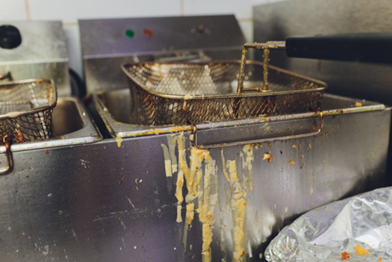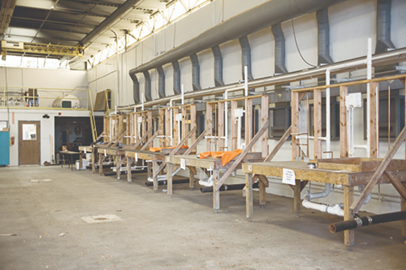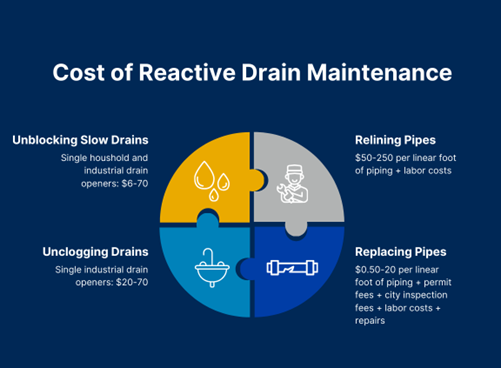Is Preventative Drain Maintenance Worth It?
Is Preventative Drain Maintenance Worth It?
Is preventative drain maintenance really worth it? You may be thinking that it’s not necessary, that you can just snake your drain if you end up with a clog. Sure, having a shiny new product as insurance for your pipes is nice, but you may be more worried about staying within your budget.
Here at State Chemical, we’ve been selling drain maintainers for decades, and we hear these worries every day. Everything seems to be an added expense with a business, and if you don’t absolutely have to make a purchase, it can be tempting to avoid it altogether.
The truth is that you have two options for your drains: preventative or reactive maintenance. You may be saving money to avoid purchasing preventative drain maintenance now, but in this article, we’re going to cover the cost of not doing preventative maintenance. This way, you’ll be prepared for what could happen if you don’t maintain your drains.
What Happens If I Don’t Use Preventative Drain Maintenance?
So, if you’re not currently using a chemical drain maintainer, you might wonder what preventative maintenance even looks like. Typically, a chemical drain maintainer is hooked up to a feed pump that runs as frequently as 24/7. While running, it releases a certain amount of product into the drain and breaks down organics before they can form buildup.
If you don’t use a drain maintainer, there are a lot of different issues your drain could end up facing:
Buildup of Fats, Oils, and Greases (FOGs)
Above all else, buildup of fats, oils, and greases (FOGs) is a near inevitability for your pipes when you don’t use drain maintainers. It’s not feasible to stop all possible organics from going down your drain, and when they do, they congeal at twists and turns in the pipes. This can look like your classic bacon grease or even unexpected things, like soup and dairy.
If you don’t use drain maintainers at all, nothing stops this buildup from forming, which can cause serious issues in your facility. Most often, FOG buildup looks like slow drains or clogs. A four-inch-wide pipe could be minimized to two inches of available space once gunk congeals on the sides, similar to a clogged artery. When you’re working with half the amount of space, you’ll experience much slower water drainage.
However, FOG buildup and foreign objects going down the drains can cause other issues as well.
Odors and Drain Flies
FOG drainage also leads to foul odors and potentially drain flies. Think about all the grease and foods going down your drain—or all the waste and soap scum. Eventually, those things start to smell, just as they would in your trash can. When they get stuck in your drain, the same thing happens, and that isn’t great for business.
It’s even worse for business when odors are accompanied by the presence of drain flies, which are also interested in all the organics they can feed on in your drain. Drain flies will burrow into FOG buildup and use it as both a habitat and as a food source. Once there, drain flies reproduce and continue to invade your facility. It’s a nasty situation for both you and your patrons, so the faster you can eliminate their habitat, the better.
Backups and Overflows
Also stemming from FOG buildup or the drainage of foreign objects, backups and overflows are a serious headache for your facility.
Backups—when wastewater comes back up the drain—are an indication that you have a drain clog. When harmful items are accidentally drained, these FOGs or other materials build into clogs. Left untreated, this will eventually cause backups that make your drains unusable until you complete emergency maintenance.
Similarly, when your drains overflow just from running water, that’s a sign of a blockage in the pipes that needs to be treated as soon as possible.
Pipe Rot
If your FOG buildup is bad enough, your pipes could eventually rot. It would take years for this to happen, but if there’s a long line under your floor, for example, and it has spent years getting gummed up with food scraps and grease and gunk, the pipe will rot. This means that no water will pass through the pipe and that it will instead leak into the foundation. Leaking pipes can also cause collateral damage to the surrounding area.
How Much Does It Cost to Fix Drain Issues?
So, there are an array of issues you could face if you don’t use preventative maintenance. But is it enough to warrant the cost of drain maintainers? Here is an idea of the price to fix each of these issues:
The Cost of Slow Drains
If you’re dealing with a slow drain, you’re likely experiencing buildup or a low level of blockage. In these cases, a drain maintainer can sometimes resolve your issue, but you’ll likely need a drain opener to fully clear the blockage before it worsens.
If you’re using a household product, this can cost as low as under $10. However, for industrial-strength products for your business, a single bottle of a drain opener could be anywhere from $20-$70.
Imagine how this cost will add up if you consistently turn to drain openers every time your drain gets slow. If you use them even once a month, you’ll be spending $240-$960 a year.
The Cost of Drain Clogs
For drain clogs, you’re looking at a similar expense—only, you won’t have the option of milder household products to resolve the issue.
If you don’t use preventative maintenance and instead rely on drain openers to clear out your drains when an issue appears, you will be looking at a single bottle for $20-$70. And if this consistently happens, you’re better off buying a case, which can range up to $600 just for 12 drain openers.
The Cost of Drain Clogs If Drain Openers Fail: Calling a Plumber
If drain openers and snaking don’t work for you, it’s time to call a plumber, and this is when things can really get expensive.
When drain openers do not clear your clog, you’re dealing with a severe situation, such as thick, long clogs too large to be broken up with chemicals, an intense blockage caused by a foreign object, or even something more extreme like pipe rot.
These are cases when a plumber will have to drill into the pipe to manually remove the clog or even replace the piping altogether. A commercial plumber will typically charge between $50 and $120 per hour depending on location and other factors. Three hours of work alone could cost up to $360, but that’s without considering the materials the plumber will need to use.
If you reline your pipes with epoxy, the materials will cost $50-$250 per linear foot of piping. Single pipes are typically around 20-feet long, but the length varies, and you may have to replace more than one section. Let’s say you just need to replace 14 feet of piping: that’s already an extra $700-$3,500.
If you need to fully replace your pipes, the material alone will cost $0.50-$20 per linear foot of piping. Let’s again imagine that you only need to replace 14 feet of piping. The materials for the piping itself will cost $7-$280, but you'll also need to pay labor costs. Then, you’ll likely have to pay a permit fee and a city inspection fee, each of which tends to fall between $100-$500. This means that you could be spending over $1,000 before labor costs even come into play. Prices will also increase based on region, pipe depth, obstacles to reaching the pipe, coinciding landscape repair needed, and cost of downtime.
You can see how quickly this adds up, especially depending on how much of the piping has been affected. These outcomes may seem drastic, but if you continually avoid maintenance, this could be what your facility is looking at down the road.
The Cost of Odors and/or Drain Flies
Odors and drain flies are the least destructive issues to leave untreated—though they, too, will cost you to resolve.
With odors, you can start preventative maintenance at any point to resolve the issue, meaning that if you use a drain maintainer to eliminate the odor, you can just continue using it to prevent any additional issues, such as FOG buildup.
The price of this maintenance varies depending on which product you use and how much of it you use per month, which will differ based on your specific drain’s needs.
Industrial drain maintainers generally range from $0.20-$1.10 per ounce. So, for example, if your feed pump dispenses a total of 20 oz. of product per day, you might spend $120-$660 a month.
However, the price varies heavily between product and dosage. So, if you only use 20 oz. of a drain maintainer each month, you’ll only be looking at $4-$22 per month.
Meanwhile, drain flies will continue to populate in your drains if they are left untreated. Drain fly treatment is generally less frequently needed, so you might only use 16 oz. of drain maintainer in a month, for example. In this situation, treatment will cost you around $3.20-$17.60 for a month, but if you wait longer to treat the issue, you may have to use more product to eliminate drain fly habitats and deter them from your drains.
Summary: The Cost of Reactive Maintenance is Usually Significantly Higher in the Long Run
Making additional expenses for your facility is hard; you don’t want to be throwing money at anything unnecessary. But preventative drain maintenance is like changing the oil in your car: if you do it regularly, you’ll save yourself the eventual much larger pain and expense of fixing a broken-down item.
Now that you understand the cost of avoiding preventative maintenance, you’re ready to explore the pros and cons of drain maintenance contracts.











